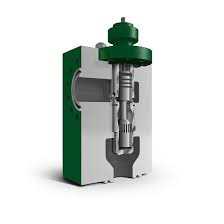
Product Name: Fisher DST-G Trim
Brand: Fisher
Product Code: DST-G
Tags: Fisher
Fisher Trim
Fisher DST-G Trim
DST-G Trim
Fisher DST-G
DST-G Trim
Fisher DST-G
Fisher Trim
Fisher DST-G Trim
Trim
Are you interested in the product Fisher DST-G Trim from manufacturer Fisher with code DST-G? Contact us now and get offer. Imtek Engineering, the fastest and most reliable industrial equipment supplier in the world, will offer you the best offer!
Get Offer With E-Mail: info@im-tek.com
Get a offer for Fisher DST-G Trim from our live support team now!
Fisher™ DST-G TrimFisher DST-G trim is specially designed for clean or dirty services where the fluid has dissolved gases that are released from a solution due to a reduction in pressure (outgassing). Outgassing typically causes two types of damage: cavitation and erosion by the fluid stream. DST-G trim stages the pressure drop, similar to the DST trim, to prevent cavitation. Erosion is controlled by the lower cage in this trim, which separates the flow stream into smaller, lower energy jets that are less likely to cause damage. This trim also has the ability to pass particulate up to 6.35 mm (1/4 in) in diameter.SpecificationsCritical ServiceOutgassing, Dirty ServiceMaterialCarbon Steel, Stainless, AlloyOperating TemperatureStandard TemperaturePressure ClassASMEProcess Connection TypeFlangedShutoff ClassClass V (FCI 70-2)Valve SizeNPS 2, NPS 3, NPS 4, NPS 6, NPS 8, NPS 10, NPS 2x3, NPS 3x4, NPS 6x8Valve Size StandardNPSOther ConfigurationsContact your local Emerson business partner or sales office to learn about additional specifications or options for this product.FeaturesDesigned to control outgassing.Has a pressure limit of 175 bar (2500 psi).The protected seat design separates the shutoff function from the throttling function to protect seating surfaces from throttling wear.Hardened trim materials provide excellent wear resistance, resulting in long trim life.Cage-type trim allows removal and inspection of parts without taking the valve body out of the pipeline.The cage utilizes large slots to separate flow into smaller jets that are less prone to erode the valve body and generate vibration.